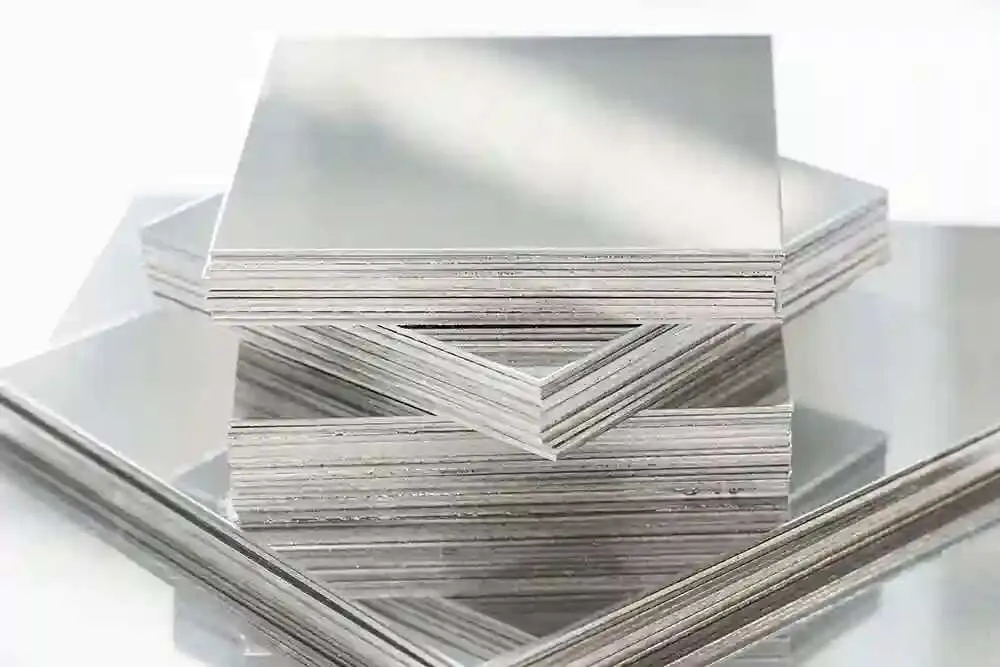The manufacturing process of tungsten plate is a fascinating and highly specialized field of metallurgy. Unlike common metals like steel or aluminum which can be melted and cast, tungsten's extremely high melting point (3422°C or 6192°F) makes traditional melt-processing impractical.
Therefore, the entire process is based on Powder Metallurgy.

Here is a detailed, step-by-step breakdown of the manufacturing process for tungsten plate:
Process Overview: From Ore to Plate
The journey can be broadly divided into three major stages:
Powder Production: Creating high-purity tungsten metal powder from raw ore.
Consolidation & Sintering: Turning the loose powder into a solid, dense metal ingot.
Mechanical Working: Shaping the ingot into a plate through rolling and heat treatment.
This is the chemical phase of the process, focused on refining the ore into pure metal powder.
Mining and Refining: Tungsten ore (typically Wolframite or Scheelite) is mined. It then undergoes a series of chemical processes to produce an intermediate compound called Ammonium Paratungstate (APT). This step purifies the tungsten and removes other elements from the ore.
Calcination to Oxide: The APT is heated in a process called calcination to produce high-purity Tungsten Trioxide (WO₃), a fine yellow powder.
(NH₄)₁₀(H₂W₁₂O₄₂)·4H₂O (APT) → 12WO₃ + 10NH₃ + 10H₂O
Hydrogen Reduction: The tungsten trioxide is then placed in a multi-zone furnace under a controlled atmosphere of flowing hydrogen gas. It is heated in stages to temperatures up to 1200°C. The hydrogen "reduces" the oxide, stripping away the oxygen atoms and leaving behind pure tungsten metal powder.
WO₃ + 3H₂ → W + 3H₂O
The final properties of the tungsten plate depend heavily on the characteristics of this initial powder, especially its particle size and purity.
This is where the loose powder is transformed into a solid block of metal without melting it.
Pressing (Consolidation): The pure tungsten powder is loaded into a mold and subjected to extremely high pressure. The most common method is Cold Isostatic Pressing (CIP):
The powder is placed in a flexible, sealed mold (like a rubber bag).
This mold is submerged in a liquid-filled pressure vessel.
The liquid is pressurized to thousands of PSI, applying uniform pressure from all directions onto the powder.
This compacts the powder into a dense, but still fragile, block called a "green compact" or "green bar". It has enough strength to be handled carefully.
Sintering: This is the most critical step. The green compact is heated to an extremely high temperature, typically 2000°C to 3000°C, which is about 90% of its melting point.
Atmosphere: The heating is done in a protective atmosphere, usually pure, dry hydrogen, to prevent any oxidation.
Mechanism: At this high temperature, the individual tungsten particles don't melt, but they bond and fuse together through solid-state diffusion. The atoms migrate across the boundaries of the particles, causing the pores between them to shrink and close up.
Result: The bar shrinks significantly in size, its density increases dramatically (to about 92-96% of tungsten's theoretical density), and it transforms into a solid, strong, but brittle tungsten ingot or sinter bar.
The sintered ingot is hard and brittle at room temperature. To shape it into a plate and improve its mechanical properties, it must be worked at very high temperatures.
Hot Rolling:
Heating: The tungsten ingot is heated in a furnace to a working temperature between 1200°C and 1600°C. At this temperature, tungsten becomes more ductile and can be shaped without cracking.
Rolling: The glowing-hot ingot is passed repeatedly through a set of powerful rollers. Each pass reduces the thickness of the ingot and elongates it. This is a gradual process requiring many passes.
Microstructure Refinement: This hot working process is crucial. It breaks down the coarse, crystalline grain structure of the sintered ingot and realigns it into a finer, elongated ("wrought") structure. This significantly increases the plate's ductility and strength.
Annealing (Stress Relief):
Between rolling stages, the plate undergoes work hardening, becoming harder and more brittle.
To counteract this, it is periodically annealed—reheated to a specific temperature in a controlled atmosphere (hydrogen or vacuum).
Annealing relieves internal stresses and recrystallizes the grain structure, restoring some ductility so that it can be rolled further without fracturing.
Finishing Processes:
Warm/Cold Rolling: For thinner plates or specific surface finishes, some final rolling passes may be done at lower temperatures ("warm rolling").
Leveling/Straightening: The rolled plate is passed through leveling rollers to ensure it is perfectly flat.
Surface Conditioning: The surface may be ground, sandblasted, or chemically cleaned to remove any oxide layer and achieve the desired surface finish.
Cutting and Shearing: The large rolled sheets are cut to the final required dimensions of the tungsten plate.
Throughout the process, rigorous quality control is essential. Final inspections include:
Dimensional Checks: Verifying thickness, width, length, and flatness against specifications.
Surface Inspection: Checking for cracks, scratches, or other defects.
Internal Integrity: Using ultrasonic testing to detect any internal voids or flaws.
Property Testing: Measuring density, hardness, and sometimes tensile strength to ensure the plate meets performance requirements.
Tungsten Ore → Chemical Processing → Ammonium Paratungstate (APT) → Calcination → Tungsten Oxide (WO₃) → Hydrogen Reduction → Pure Tungsten Powder → Cold Isostatic Pressing → Green Compact → High-Temperature Sintering → Solid Tungsten Ingot → Hot Rolling → Tungsten Plate → Annealing & Finishing → Final Product
Share this page
If you have any product needs or questions, please leave us a message for consultation.
TEL: 86-18623759992
jason@bettmetal.com
Innovating Materials
for a Brighter Future